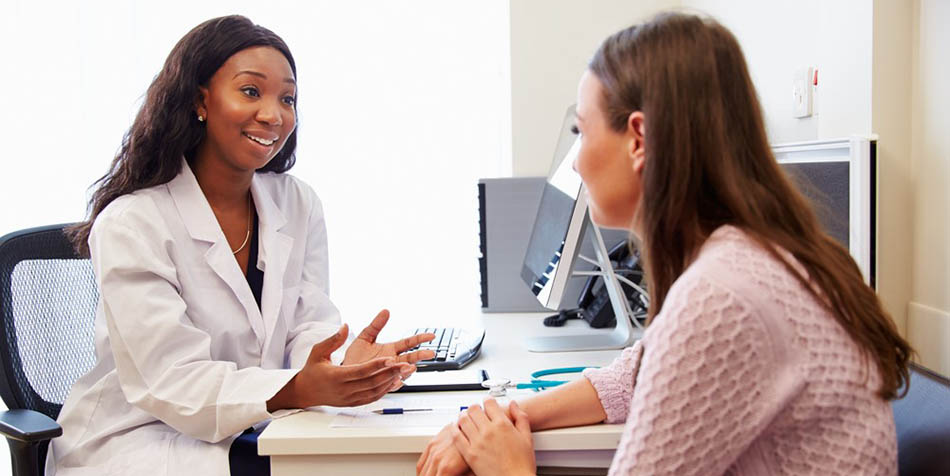
Women should take note of any changes or irregularities in the look and feel of their breasts.
Breast cancer is the most common cancer among women in the United States, and the second leading cause of cancer death in women after lung cancer, according to the American Cancer Society. Fortunately, there are better treatment options and a greater chance of survival if breast cancer is detected at an early stage. Women who familiarize themselves with their breasts and get regular screenings can increase their odds of detecting breast cancer before it becomes more difficult to treat.
Why familiarize yourself with your breasts?
Starting at age 20, women should be familiar with their breasts and promptly report any changes to a doctor. Although most breast changes are harmless, some changes may indicate something serious.
Dr. Joyce Moore, a breast surgeon at Sarah Cannon Cancer Network at HealthONE, says the recommendation to do a breast self-exam once a month has changed in recent years.
"Instead of doing the traditional exam, just pay attention to your breasts," she says. "If you find or feel anything that has changed, then you should immediately report it and see your doctor. If you happen to be taking a shower, and you feel something, you don't have to wait to do your monthly breast exam. You can go ahead and seek treatment for that right away."
It's best to do an exam about a week after menstruation, Dr. Moore says. There tend to be several breast changes during the menstrual cycle to prepare for potential breastfeeding.
A self-exam only takes a few minutes to complete. Here's how to do so in just three steps:
1. Do a visual inspection
Standing in front of a mirror, look for any visual changes in your breasts, including redness, swelling, puckering, nipple inversion or dimpling. Do this three times: once with your arms relaxed at your sides, once with your arms raised over your head and once with your hands on your hips.
2. Do a manual inspection
Use your right hand to check your left breast for knots, lumps, thickened areas or other changes. Using the pads of your fingers, follow a circular pattern to check the entire breast and underarm area. Gradually increase the pressure as you go. Gently squeeze your nipple to check for discharge. Repeat these steps using your left hand to check your right breast.
3. Do a manual inspection lying down
While lying down, put a pillow under your left shoulder and place your left arm behind your head. Use the techniques from step 2 to check your left breast with your right hand. Then put the pillow under your right shoulder and place your right arm behind your head. Repeat these steps as you check your right breast with your left hand.
What are the current mammogram recommendations?
Experts recommend starting regular screenings at age 40, Dr. Moore says, unless there is a reason to start earlier, such as a family history of breast cancer. Screenings should continue until you can no longer tolerate treatments for breast cancer. "If you're a healthy 85-year-old, and you can tolerate whatever treatments might be needed to take care of the cancer, it's legitimate to continue to look for breast cancer," she says.
HCA Healthcare’s Sarah Cannon Cancer Network recommends the following:
- Age 20 and older: Familiarize yourself with your breasts monthly and promptly report any changes to a doctor
- Age 20-40: Schedule a breast exam with your doctor every three years
- Age 40 and older: Consult your doctor annually about a mammogram and breast exam by your doctor
Over the last two decades, screenings have reduced the risk of death from breast cancer by 40%, Dr. Moore says. If it is caught early, such as in stage 1, the percent chance of someone recovering is in the high 80s to 90s.
How can breast cancer risk be reduced?
Some of the risk factors for breast cancer, such as age, being female and genetics, cannot be changed. However, there are modifiable factors that can reduce your risk.
"The first thing we can do is to keep our body weight in a normal range. Obesity and morbid obesity have been shown to increase the risk of breast cancer," Dr. Moore says.
"Never, ever pick up a cigarette," she adds. "Smoking changes our immune systems and makes us more likely to have different kinds of cancers."
Perhaps the greatest thing you can do to reduce your risk of getting any type of cancer is to maintain an active and healthy lifestyle. "By active lifestyle, I don't mean a woman has to get out there and run a marathon or do a triathlon. Just get up and walk and move," Dr. Moore says. "Even if that's just walking around the backyard or gardening, that is very important."
A plant-based diet can also reduce your risk, and you don't have to go fully vegetarian or vegan to benefit. "If we get most of our nutrition through plant-based sources, that's better for our bodies," Dr. Moore says. Other modifiable factors include limiting alcohol intake and reducing stress.
Be aware of breast changes
While women may notice certain breast changes, such as tenderness or pain, these usually do not indicate cancer. However, if symptoms of this kind are new and persistent, it's important to get them checked.
"Don't be afraid if you find something," Dr. Moore says. "The majority of the time, it's going to be ok. But in the small percentage where it isn't OK, we don't want that to become advanced. We want to catch it early."
Take note of changes in breast appearance and feel, and contact your doctor if you notice anything abnormal or different.
$webqFacilityNumber
Need a Physician?